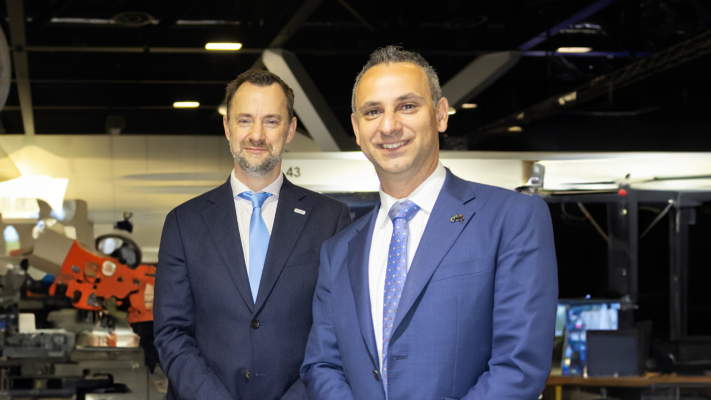Australia and the UK are celebrating stronger connections and collaborations in space, with today marking three years since signing their historic Space Bridge agreement.
Signed in 2021, and designed to support companies with space innovations that improve the world, the UK-Australia Space Bridge Arrangement continues to unlock export and investment opportunities.
Major achievements from the partnership include investment through the International Bilateral Fund and a Supply Chain Mapping Tool to identify opportunities for collaboration and growth.
Australia and the UK have a number of space industry hubs and clusters that can support individuals or companies to work in Australia or the UK. A directory of these ‘soft landing zones’ can be requested by email to SpaceBridgeUK-AU@austrade.gov.au.
Head of the Australian Space Agency, Enrico Palermo, says the partnership supports space sector growth in applications that positively impact our planet.
“Space Bridge activities are demonstrating how working together in space drives outcomes across our economies.” Mr Palermo said, pictured above along with UK Space Agency CEO Dr Paul Bate (left).
“In three years, this partnership has driven investment and established new connections that are helping our respective space sectors develop applications that benefit life on Earth.”
Snapshot
The UK-Australia Space Bridge was signed on 23 February 2021. It is an agreement between:
- the Australian Space Agency
- the UK Space Agency
- Austrade
- the UK Department for International Trade.
- government-to-government collaboration on space programs and technology
- space regulation
- trade and investment
- research and education.
Milestones
1. Delegations from both Australia and the UK have travelled respectively to explore commercial partnerships.
2. Deloitte's GRAVITY Challenge has been generating innovative ideas to tackle real-world issues.
3. The Supply Chain Mapping Tool was launched by the UK’s Satellite Applications Catapult, the UK Government, and Australia’s SmartSat CRC to develop capabilities and foster collaboration.
4. A number of Australian space companies are now opening up new offices in the UK and Australia.
5. As part of a bilateral space cooperation initiative, three Australian students have completed the Airbus Space Internship program in the UK.
International Bilateral Fund
The first phase of grants under the UK’s £20 million (approx. A$40 million) International Bilateral Fund to develop cutting-edge technologies that will advance global space capabilities included eight partnerships between the UK and Australian space sector organisations:
- Development of a novel approach to lunar regolith sampling – University of Glasgow and Australian Remote Operations for Space and Earth Consortium
- Complementary use of different sensing technologies to increase coverage - Deimos Space Ltd, SJE Space Ltd, Silentium Defence Trading and Exa Research
- Developing a new quality assurance platform for EO data - Telespazio UK, Symbios Communications, and the National Physical Laboratory
- Autonomous agriculture to support space exploration - Vertical Future Ltd, University of Cambridge, University of Adelaide, Axiom Space, and Saber Astronautics
- Creation of an integrated ground-to-space national water quality monitoring system - Surrey Satellite Technology Ltd, Assimilia, RALSpace, CSIRO Space and Astronomy and Smartsat CRC
- Development of fluorescent deep space petri pods – University of Exeter and University of Leister and an international coalition including Australia.
- Using Earth Observation, climate and weather data to predict and manage biosecurity risks - Assimila Biosecurity Ltd x Cervantes Agritech Pty Ltd and CABI
- Responsive in-orbit inspection service - D-Orbit x High Earth Orbit Robotics Pty Ltd
Research investments
In 2021, Australia’s SmartSat CRC, the UK Science and Innovation Network and the UK Satellite Applications Catapult jointly contributed A$500,000 to fund UK-Australian research projects. The five projects explored and advanced satellite technologies for a range of uses:
- Antarctic Sea ice detection
- Plant breeding programs and agricultural yield forecasting
- Preventing cyber-attacks on future financial encryption services
- Improving the stability of next-generation satellite communication links under changing weather conditions
- Establishing commercial opportunities for Earth Observation calibration and validation facilities for upcoming missions.

